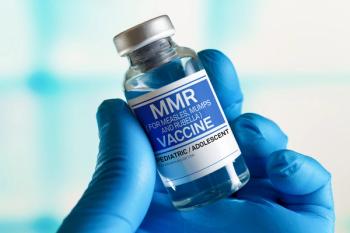
Ozanimod Approved by FDA for Treatment of Relapsing Forms of Multiple Sclerosis
Ozanimod demonstrated acceptable safety and tolerability in the phase 3 SUNBEAM and RADIANCE part B trials.
The FDA has approved ozanimod (Zeposia, Bristol Myers Squibb) 0.92mg for the treatment of adults with relapsing forms of multiple sclerosis (RMS) including clinically isolated syndrome, relapsing-remitting disease, and active secondary progressive disease.
Ozanimod is an oral treatment, and it is the only approved sphingosine-1-phosphate receptor modulator that offers patients with RMS an initiation with no generic test and no label-based first-dose observation required for patients, according to the company.
The approval is based on data from the largest pivotal, head-to-head RMS studies, including the randomized, phase 3 SUNBEAM that tested the safety and efficacy of ozanimod versus interferon beta-1a in relapsing multiple sclerosis, and RADIANCE, which tested the safety and efficacy of the selective sphingosine 1-phosphate receptor modulator ozanimod in relapsing multiple sclerosis.
In both trials, ozanimod delivered powerful efficacy as measured by annualized relapse rate, as well as on the number and size of brain lesions in comparison to interferon beta-1a (Avonex, Biogen).
Ozanimod demonstrated a relative reduction in ARR versus interferon beta-1a of 48% through 1 year and 38% at 2 years. At 1 year, treatment with ozanimod reduced the number of T1-weighted gadolinium-enhanced brain lesions more than interferon beta-1a, a relative reduction of 63%, and reduced the number of new or enlarging T2 lesions, a relative reduction of 48%.
At 2 years, treatment with ozanimod reduced the number of T1-weighted gadolinium-enhanced brain lesions more than interferon beta-1a, a relative reduction of 53%. In addition, ozanimod also reduced the number of new or enlarging T2 lesions versus interferon beta-1a, a relative reduction of 42%.
Ozanimod demonstrated acceptable safety and tolerability in the phase 3 SUNBEAM and RADIANCE part B trials. The most common adverse reactions of the oral treatment include upper respiratory infection, hepatic transaminase elevation, orthostatic hypotension, urinary tract infection, back pain, and hypertension.
Before initiation of treatment with ozanimod, all patients require assessments, including a recent complete blood count, lymphocyte count, an ECG to determine whether pre-existing conduction abnormalities are present, a recent liver function test, and consideration of current and prior medications and vaccinations. An ophthalmic assessment is required in patients with a history of uveitis or macular edema.
REFERENCE
U.S. Food and Drug Administration Approves Bristol Myers Squibb’s ZEPOSIA® (ozanimod), a New Oral Treatment for Relapsing Forms of Multiple Sclerosis [news release]. Princeton, NJ; BusinessWire: March 26, 2020.
Newsletter
Stay informed on drug updates, treatment guidelines, and pharmacy practice trends—subscribe to Pharmacy Times for weekly clinical insights.














































































































































































































